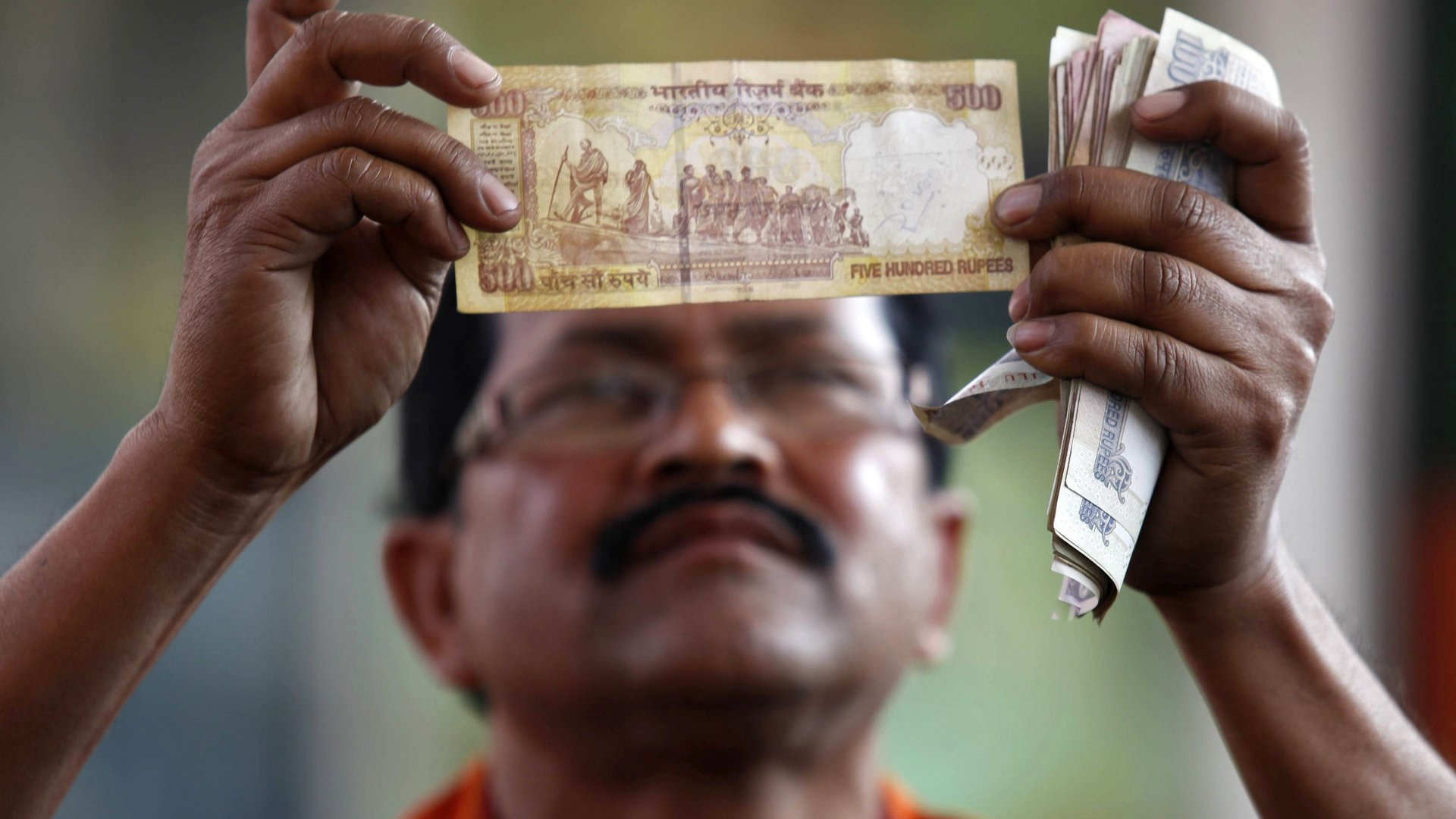Demonetization could spark a new digital economy in India
In what can only be described as a historic opportunity to weed out evils in the country’s shadow economy, the Indian prime minister, Narendra Modi, has announced that all 500 and 1000 rupee notes have been stripped of their status as legal tender, as his party intensifies its strike on “black money.”


In what can only be described as a historic opportunity to weed out evils in the country’s shadow economy, the Indian prime minister, Narendra Modi, has announced that all 500 and 1000 rupee notes have been stripped of their status as legal tender, as his party intensifies its strike on “black money.”
The two notes make up about 86% of the currency in circulation by value in India and represent the maximum—and most popular—currency denominations. Their demonetization has been both praised and criticized in the international media—and the people of India themselves are equally split.
So why demonetize the notes? India’s ministry of finance has said that the purpose is to curb financing of terrorism and any other subversive activities through the proceeds of fake currency notes. It also aims to restrain the shadow economy in India, the major driver of inflation that adversely affects the poor and deprives the government of its tax revenue. In addition, it is hoped that the move will reduce cash circulation in the country—as most corrupt activities and illegal dealings are done through cash.
The move is also expected to unearth people’s real income and ensure those falling under certain brackets pay taxes promptly. At present just 1% of the country’s people are paying income tax.
Cashing out
In the West, many would likely think that the revocation of certain bank notes, though inconvenient, would be no problem. After all, the large majority have bank accounts and debit and credit cards to use. But in India, it is a different story—banking is still considered to be a luxury for the majority of people who are below the poverty line. Despite current government attempts to ensure financial inclusion, many still use only notes and coins to pay for goods and services. In fact, it is estimated that 95% of transactions in India are made using cash, and for those squirreling money away, it is a necessity to survive.
Though the announcement came as a surprise to some sectors of the public (and many politicians), the ruling party has been determined to eradicate black money from the moment it took power. A special investigations team was set up in 2014 to curb the menace of black money, and the screws of justice have been gradually tightened through the amendment of a series of measures, such as the double taxation avoidance agreements.
The people of India have been given until the end of business hours on December 30, 2016 to exchange or deposit their notes in banks and post offices. Other measures have also been put in place to make sure that the procedure runs smoothly and is as convenient as possible for the public.
Social help
Though its intentions for the country’s economy appear positive, the move has not been well received by the common man. Tempers are flaring and some are warning of riots over the abrupt change. The poor, who are unused to dealing with banks, have mainly been left by authorities to wait in long lines outside financial institutions simply to figure out what to do with their notes.
Social media has been flooded with rumors—and conspiracy theories abound. They include the notion that the new 2,000 rupee note has an embedded electronic chip. But people are also using social media sites to make sure that no one loses out and are crowdsourcing and sharing information on what to do and where to go.
Digital banking companies have also risen to the challenge, setting up shop in more convenient places to allow people to sign up and use their money as they wish. Paytm, an e-wallet firm, has seen a huge surge in transactions, for example—even a roadside stall has started to accept payments through e-wallet.
The removal of the notes has also brought India’s first “digital and cashless village,” Akodara, which is 60 miles from the northern city of Ahmedabad, into the limelight. Most of the 1,200 people living in Akodara buy everything from wheat flour to potato chips through mobile banking and have little to worry about when it comes to the demonetization.
The Reserve Bank of India has also been encouraging citizens to make use of internet and mobile banking at least in the short term as it works to “alleviate the pressure on the physical currency.”
True though it may be that demonetization has brought with it an inevitable slowdown, the act could be the start of a new economy for India—one that is far more inclusive, and helps to educate the people of India on the benefits of transactions in a digital world.
This article was originally published on The Conversation. Read the original article.